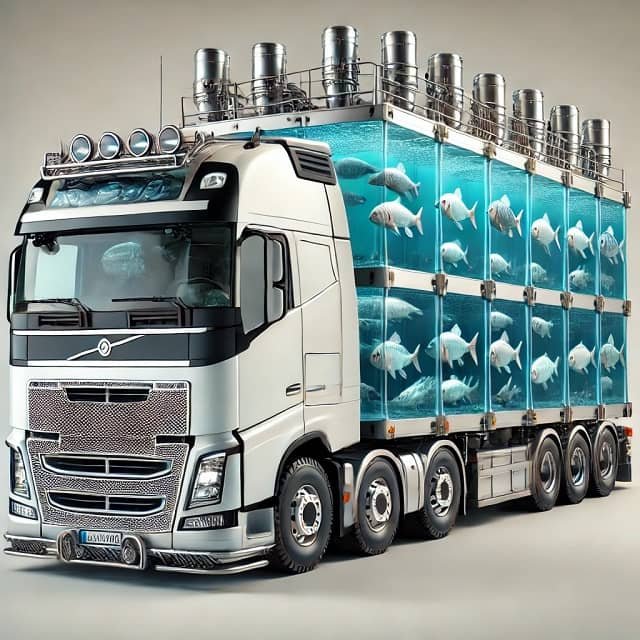
Microplastics, those insidious fragments of plastic pollution, are infiltrating every corner of our planet, including the delicate ecosystems of marine environments and even in aquaculture production systems, posing a significant threat to aquatic organisms
Although studies have been conducted on the effects of microplastics on shrimp, little is known about the potential impact of microplastics on the mechanical properties of crustacean exoskeletons, particularly marine shrimp that sustain the global shrimp industry. The exoskeleton is the first line of defense for shrimp against pathogens.
In this way, a team of scientists from Zhejiang University analyzed the mechanical properties of the exoskeleton of the Pacific whiteleg shrimp Litopenaeus vannamei after exposure to realistic levels of microplastics present in the environment.
The Research
The scientists used microplastics of 50 μm and 500 nm to mimic those found in the natural environment to investigate whether the effects depend on size.
They employed a control group (without the addition of microplastics) and two experimental groups (micro-MP: 50 μm; Nano-MP: 500 nm). The exposure period was four weeks to ensure molting occurred.
Key Findings
It is essential to note that the exoskeleton plays a crucial role in promoting growth, survival, and defense against pathogenic bacteria. Thus, understanding the impact of microplastics on crustacean exoskeletons is vital for the shrimp industry. Previous studies have shown that microplastics make shrimp more vulnerable to diseases.
“Our research is the first to demonstrate that exposure to levels of microplastics found in the environment can substantially affect the mechanical properties of the exoskeleton of L. vannamei,” the scientists report.
In summary, the findings, published in a respected scientific journal, reveal a concerning picture:
Stay Always Informed
Join our communities to instantly receive the most important news, reports, and analysis from the aquaculture industry.
- Harder but Fragile: Exposure to microplastics significantly increases the hardness and stiffness of the shrimp’s exoskeleton. This might seem like a good thing, right? Think again. Although it initially appears more robust, the exoskeleton becomes brittle and prone to fractures.
- Plastic Invaders: The study not only observed external impacts but delved deeper. Scientists found microplastics embedded within the exoskeleton itself. This intimate contact raises concerns about potential long-term consequences, such as hindered growth and reduced mobility.
- Chemical Warfare: Beyond physical changes, researchers observed a chemical shift. Exposure to microplastics reduces the degree of acetylation in the shrimp’s chitin, the key component of its exoskeleton. This change weakens the chitin and compromises the structural integrity of the entire armor.
- Muscular Weakness and Reduced Calcium: The damage doesn’t end there. Microplastics appear to alter calcium metabolism, a crucial element for muscle function and exoskeleton hardening. This results in weaker muscles and further compromises the shrimp’s ability to defend and thrive.
- Genetic and Metabolic Fusion: The study revealed that exposure to microplastics significantly affects the genetic and metabolic machinery of the shrimp. Key genes and metabolites involved in chitin biosynthesis were disrupted, further hindering exoskeleton production and quality.
Conclusion
The study concludes that environmental microplastics, at relevant concentrations, can affect the mechanical properties of the exoskeleton of L. vannamei.
Furthermore, the study highlights that under realistic environmental conditions, the deterioration of shell integrity may compromise the long-term survival of shrimp, with potentially dangerous consequences for biodiversity and crustacean production through aquaculture.
The study was funded by the Major Science and Technology Project of New Agricultural Varieties Breeding in Zhejiang Province, the National Natural Science Foundation of China, and the Fund of Hainan Provincial Key Laboratory of Tropical Maricultural Technologies.
Reference (open access)
Tong, Difei and Yu, Yingying and Lu, Lingzheng and Zhou, Weishang and Yu, Yihan and Zhang, Xunyi and Tian, Dandan and Liu, Guangxu and Shi, Wei, Microplastics Weaken the Exoskeletal Mechanical Properties of Pacific Whiteleg Shrimp Litopenaeus Vannamei. Available at SSRN: https://ssrn.com/abstract=4665417 or http://dx.doi.org/10.2139/ssrn.4665417
Editor at the digital magazine AquaHoy. He holds a degree in Aquaculture Biology from the National University of Santa (UNS) and a Master’s degree in Science and Innovation Management from the Polytechnic University of Valencia, with postgraduate diplomas in Business Innovation and Innovation Management. He possesses extensive experience in the aquaculture and fisheries sector, having led the Fisheries Innovation Unit of the National Program for Innovation in Fisheries and Aquaculture (PNIPA). He has served as a senior consultant in technology watch, an innovation project formulator and advisor, and a lecturer at UNS. He is a member of the Peruvian College of Biologists and was recognized by the World Aquaculture Society (WAS) in 2016 for his contribution to aquaculture.



